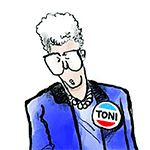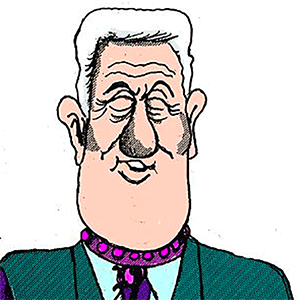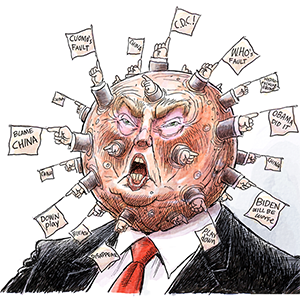Halfway through 2025, Philly has the fewest homicides in recent memory
Published in News & Features
PHILADELPHIA — Philadelphia has recorded the fewest homicides in recent memory this year — a rate of violence that, after reaching record highs just three years ago, has plummeted to a pace the city has not seen since the 1960s.
Violence in the city began to decline in 2023, and it has continued to fall ever since. Through July, 134 people were killed in homicides — a striking drop compared to the 319 people killed during the same period in 2021.
The decrease comes despite several high-profile shootings this summer that left children and teens maimed by bullets. And for the families that have experienced the violence firsthand over the last five years, the change brings little comfort.
Still, it is progress. And as homicides have fallen, so, too, have shootings. This year the city is on pace to record the fewest number of people shot in the last decade. And while the number of victims has declined only slightly compared to last year, it has dropped by more than half compared to 2021, when the city's gun violence peaked.
"This is quite remarkable," Temple University criminologist Caterina Roman said — remarkable that within five years, Philadelphia experienced the single greatest number of homicides and shootings in its history, and now, one of its lowest.
Philadelphia's waning violence mirrors that of other cities. Baltimore, New Orleans, Detroit, and New York City have all seen marked declines in violence amid what some criminologists have dubbed "the Great Murder Decline." But the drop in homicides in Philadelphia over the last 18 months is among one of the most significant in the nation.
And the reduction comes as the city's jail population is near its lowest level in recent memory, the police department remains understaffed, and officers are recovering fewer guns and stopping about half as many pedestrians as they were five years ago.
Just as there was no clear explanation for the spike in crime, experts say it's hard to pinpoint the reason for its decline. But criminologists and law enforcement officials offered some theories: the overall return to normal life post-pandemic, the expansion of community-based violence prevention programs, more arrests in shootings, and the recent dismantling of some of the city's most violent gangs.
But if July is any indication, nothing about gun violence is certain. Forty-six people were shot over a July Fourth weekend that, between fireworks and celebratory cookouts, featured more than 100 bullets sprayed through a South Philadelphia block party, leaving 12 people shot and three young men dead.
Just last week, as children played and swam in the pool at a West Philadelphia recreation center, gunfire erupted, leaving four kids wounded, including an 11-year-old and a 10-year-old.
And some crimes — like car theft and aggravated assault with a gun — remain above pre-pandemic levels. Reported rapes are up slightly over 2024, but are still far below previous years.
Police Commissioner Kevin Bethel said he is encouraged by the reduction in shootings, but remains concerned that certain areas of the city that have always been hot spots for crime — parts of Hunting Park, Strawberry Mansion, Cobbs Creek — continue to experience violence, albeit not as intensely as three years ago.
And while the reduction in 2025 may seem like progress, he said, he — like the families of homicide victims — cannot ignore the violence of the last four years.
"Do we wipe away the ones that came the year before this, as if they don't exist?" he said of the nearly 2,000 men, women, and children killed in four years. "They don't go away."
Still, Bethel said he and his staff aren't taking the dip in crime for granted — they're studying the data, working to boost officer morale, and continuing enforcement: Traffic stops, which had plummeted, are at the highest pace since the pandemic. The homicide clearance rate is at an impressive 92% so far this year — a number Bethel said he has never seen in his career and that is up from about 47% in 2022.
Still, he said, police have to keep pushing.
"If you got the wind at your back," he said, "then run, dammit."
The ecosystem of life
Experts who study crime trends have pointed to a wide range of possibilities for the decline. Jeff Asher, a New Orleans-based crime analyst, wrote that the increase in public spending during the pandemic, like repairing highways, community centers, and launching new grant programs, played a role.
John Roman, the director of the Center on Public Safety and Justice at NORC at the University of Chicago, similarly believes that the role of government jobs and the reopening of city services post-pandemic positively shaped peoples' lives, and prevented them from turning to crime.
Bethel said the spike amid the pandemic showed what happens when "the ecosystem of life" — the courts, the probation officers, the school counselors, all of the people who touch the lives of children and families through various forms of intervention, prevention, and enforcement — shuts down.
"We know the value of it all," he said.
"If you got the wind at your back, then run, dammit."
Philadelphia Police Commissioner Kevin Bethel
He also credited better coordination and communication among city, state, and federal officials invested in violence prevention.
In 2009, when Bethel was a deputy police commissioner, he said it felt like the department "was on an island" when it came to battling crime, and that city and federal agencies worked as if they were competing and weathering a storm alone.
Today, he said, the department's relationship with federal partners like the FBI, ATF, and the U.S. Marshals is "the best I could ever remember in my career."
"There's a lot more synergy right now," Bethel said.
Caterina Roman, an associate professor of criminal justice at Temple University, credited how the city grew its network of prevention and intervention work, like the Gun Violence Intervention program for juveniles, a new version of "Focused Deterrence," in which law enforcement provides extra surveillance of and services to teens suspected of gang activity. She also pointed to a pilot program in Germantown that provides job training and support for adults at high-risk of being victims or perpetrators of violence.
"It's not one strategy they're doing, but it's the confluence of smart policy and training — from the beat officers all the way up," she said. "How are we thinking about violence? How are we reporting on violence? How are we creating new priority areas and people?"
District Attorney Larry Krasner agreed.
"There is a unified front that prevention matters that I don't think people were willing to say before the pandemic," he said.
Still, Roman said, it's hard to know which programs had an impact. Philadelphia, she said, has not adequately evaluated many of its anti-violence initiatives to learn which were successful or need to be reshaped.
Persistent problems
While Philadelphia has made strides, there have been several incidents this year in which people were shot while attending holiday block parties and gatherings. On Memorial Day weekend, 11 people were shot on Lemon Hill, and over the July Fourth holiday, 20 people were shot in separate gunfire at a South Philadelphia bar and a block party.
And, during the last week of July, there were three shootings with four or more victims — including five children under 12.
Those incidents underscore what remains a persistent problem in the city, particularly since the pandemic: shootings with multiple victims. Since 2020, an Inquirer analysis of police data shows, there have been 30 shooting incidents with more than five victims. Those crimes alone, often at cookouts and social gatherings during holiday weekends, left 200 people shot and 24 dead.
Bethel said such shootings aren't unique to this year. In many of the incidents, including the Lemon Hill and Grays Ferry shootings, there was an exchange of gunfire, with shooters firing back and forth at one another.
And Krasner pointed to the prevalence of switches, devices that allow firearms to shoot at a faster rate.
More bullets, he said, means more victims.
Hopeful neighbors
Residents in some of the neighborhoods hardest hit by violence said they can feel the difference.
Nizja Faison, 27, has lived on the 4300 block of Franklin Street in Hunting Park his entire life and said he has always felt safe during the day. It's the night, he said, that can bring conflict and troubled teens in the neighborhood.
Just last month, Faison said, he saw a group of teens with guns get into a fight, and one pistol-whipped another. (Aggravated assault with a gun remains elevated above pre-pandemic levels, data show.)
But gun violence overall in the area has gone down. Along four blocks of West Bristol Street, which runs perpendicular to Franklin and attracts drug dealers, 10 people were shot in 2022, data show. So far this year, there have been no shootings.
The change has allowed Faison and his neighbors space to breathe, he said, to sit on their porches and let children play outside.
"There are so many good people who want to keep the neighborhood safe," he said.
Among them are Lee Bailey and his mother, Rosa Smith. Neighbors banded together two years ago to get the city to shut down a speakeasy that was attracting crime, they said. And earlier this year, they said, residents approached a group of young men selling drugs on their corner and persuaded them to move elsewhere.
"We're not gonna allow that here," said Bailey, 35. "Too many people have kids, too many people have been on this block for too long."
If neighbors don't band together to push for change, he said it doesn't get done. He said he hasn't seen an increased police presence in the area.
And for Deandre Leon, it will take more than a few years of reduced violence to feel convinced that he is safe.
Leon, 22, said he lost 10 friends to shootings in the last five years. There's Diyaan, Tahmair, and Michael. Nazir and Khalil.
The violence, he said, has only burned out "because there's nobody left."
And the underlying forces that drive violence — underfunded schools, drugs, poverty, teens with broken homes and little hope — remain unchanged, he said. He knows, he said, because he's lived it.
"The city is just catching a break right now," he said. "It's catching a break."
©2025 The Philadelphia Inquirer, LLC. Visit at inquirer.com. Distributed by Tribune Content Agency, LLC.







Comments